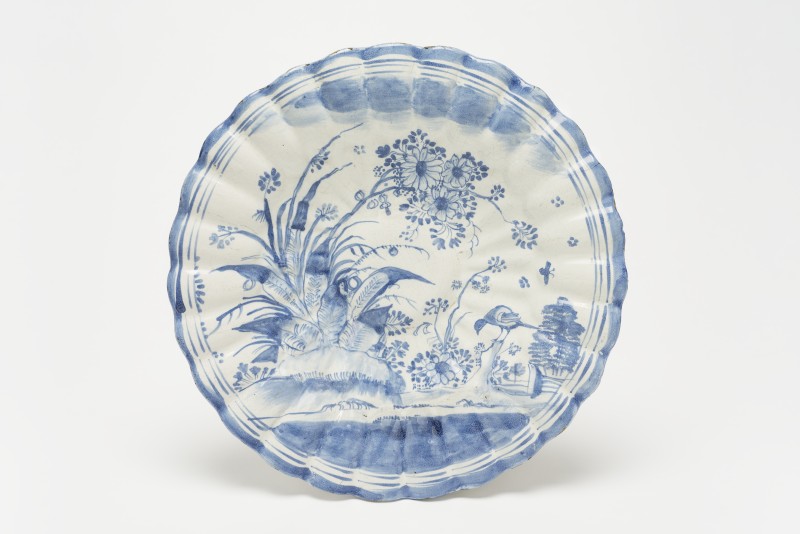Fächerplatte auf kleinem Standring mit gebuckeltem Spiegel, gewelltem Anstieg und konvex gerundeter Fahne mit leicht gebogtem Rand.
Über den Spiegel und die Fahne verteilt eine hohe, sich nach rechts neigende Blütenstaude auf Erdhügel. Rechts davon auf kleinem Felsen fasanähnlicher Vogel. Dazwischen fliegendes Insekt und mehrere Vierpunktrosetten. Die Randeinfassung aus drei dünnen und einer breiten Linie.
Ehemals in fünf Scherben zerbrochen und geklebt, alte Restaurierung gelöst, Neuklebung und Retusche, Glasur mit Haarrissen, Glasurabplatzungen am Rand.
Ohne Marke
Alte Inv. Nr. Keramik I. 415
Erwerbung vor 1896 (alter Bestand)
en

